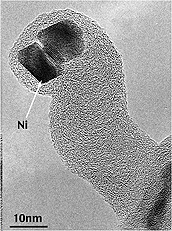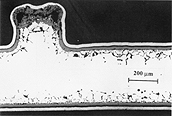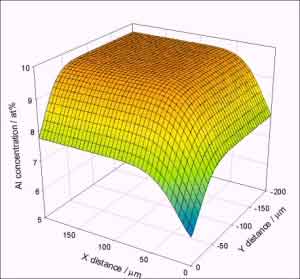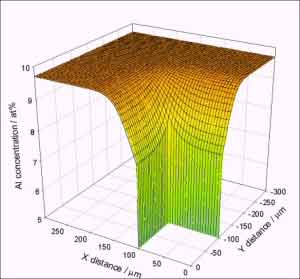Steels are an industrially important group of alloys. High Cr steels are alloys of choice for a number of critical components in Advanced Gas Reactors (nuclear) including as cladding to house the fuel pellets. In some reactors significant carbon deposits form on the cladding hindering heat transfer. Understanding the mechanism leading to the formation of the filamentary carbon deposits has been a significant research programme within the High Temperature Oxidation Group due to the expertise of the late Prof Hugh Evans. Hugh described the oxidation processes leading to the formation of the catalyst and proposed methods to successfully inhibit the formation or efficacy of the particle. This research area was supported by EDF. This work was presented at many conferences and won the poster prize at the 2019 GRC.

High resolution TEM micrograph of a carbon filament. The dark particles at the tip are shown to have lattice parameters consistent with metallic Ni viewed along a fcc (110) axis.

Cross-section through a cooling fin on a high Cr steel heat exchanger showing the formation of an external oxide scale and internal degradation of the alloy. The composnent is close to end of life.
Model devised in our group to predict the depletion of the external oxide forming element, in this case Cr, and thus estimate the life time of the cooling fin on the heat exhanger shown above. Below the same prediction for the base of the cooling fin. 